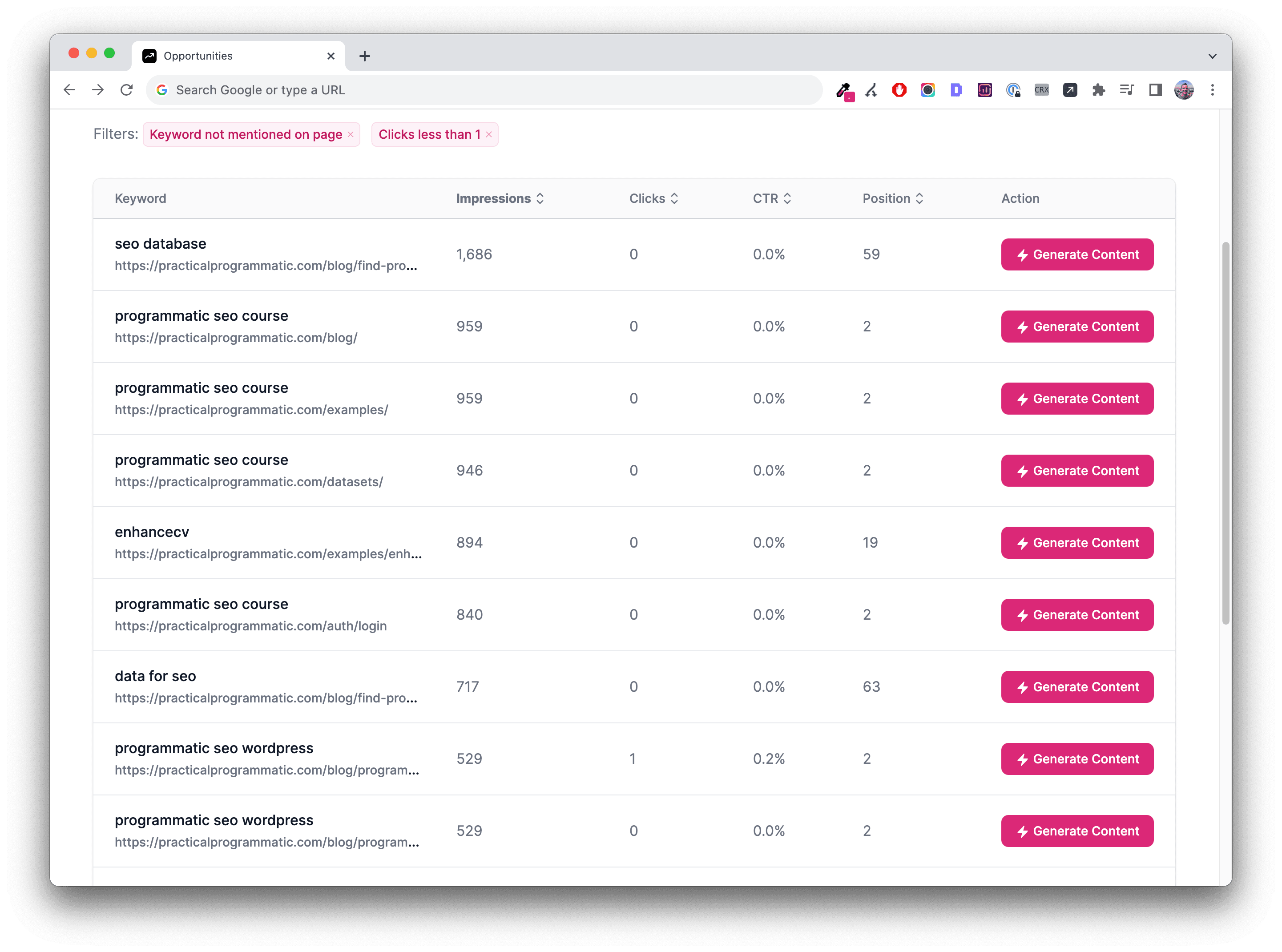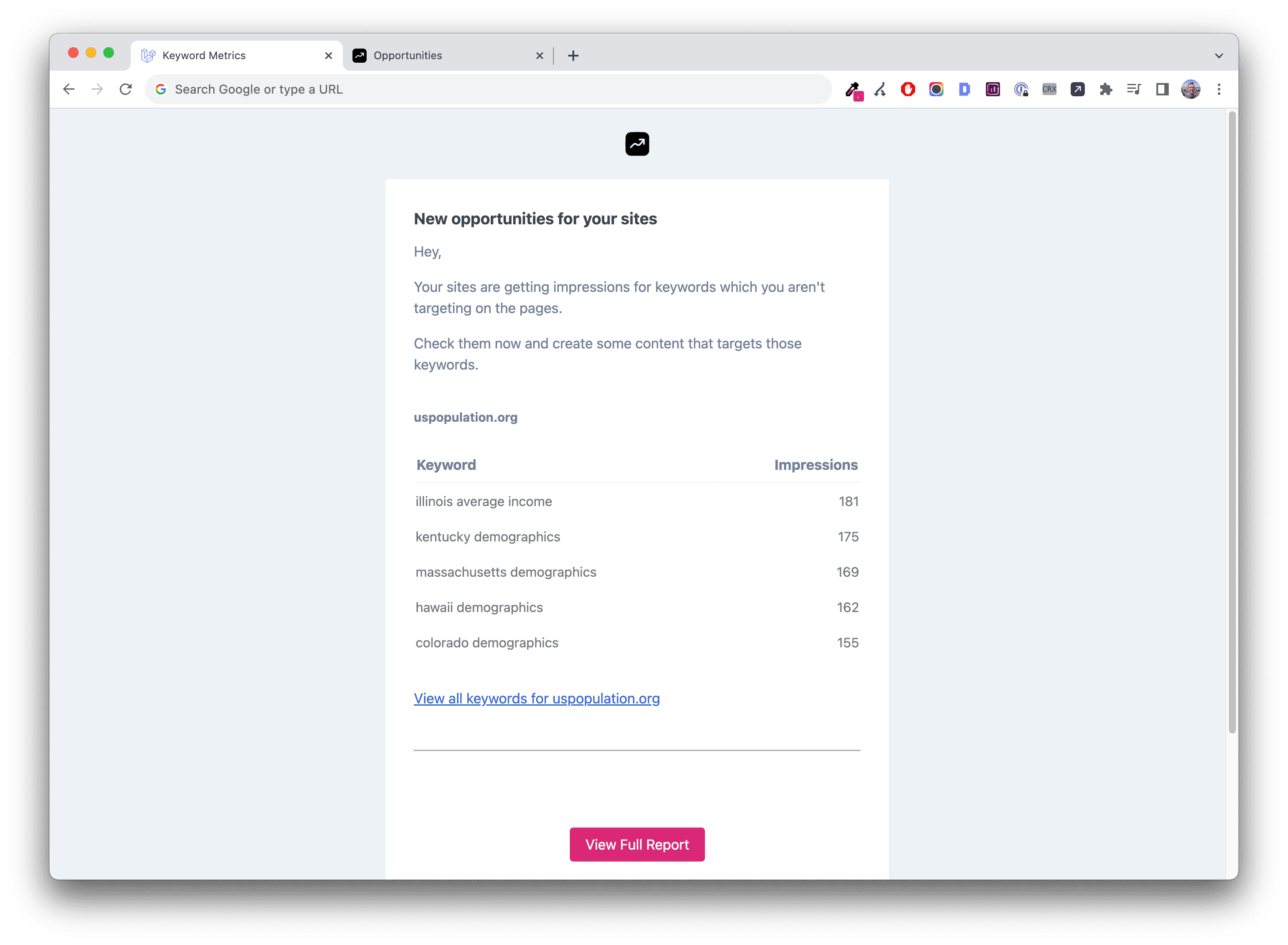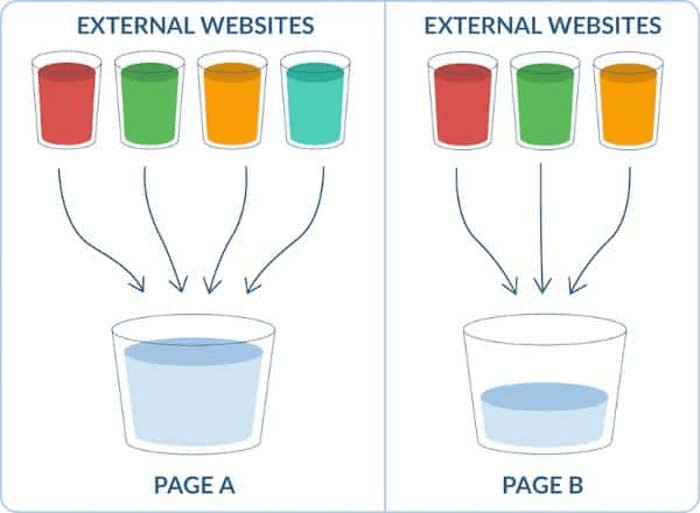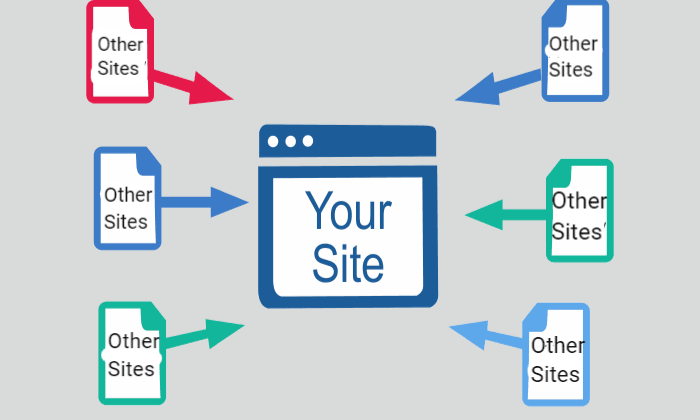Quick Summary
In this article, we outline a step-by-step guide to efficient content generation, from planning and creation to promotion and monitoring. Whether you're building content to drive traffic, boost SEO, or engage your audience, Keyword Metrics helps speed up the process. With Keyword Metrics, you can discover valuable keyword opportunities, optimize content for higher rankings, and track its performance over time.

Need Tips on How to Generate Content for Your Website?
Content generation is often the most time-consuming task for anyone aiming to grow their website. However, it's an essential part of attracting organic traffic, building trust, and establishing authority in your niche.
Content generation refers to the process of producing original, high-quality materials for platforms like websites, blogs, and social media. This process revolves around crafting engaging and relevant content that speaks to your audience's needs and interests. Whether you're educating, entertaining, or persuading, the goal is to captivate your audience and keep them coming back.
In this Keyword Metrics article, we’ll walk you through a simple, step-by-step guide to generating content efficiently for your website.
What Is Content Generation?
Content generation is the process of creating original, engaging materials for platforms like websites, blogs, and social media. It involves crafting content that speaks to your audience’s needs, whether you're aiming to educate, entertain, or persuade. Effective content generation ensures that your materials are relevant, valuable, and aligned with both user intent and SEO best practices. The goal is to captivate your audience, encourage interaction, and ultimately drive traffic and conversions.
How to Generate Content Ideas for Websites
Before starting out to create content, you’ll need to brainstorm ideas on what content to create. Below are some interesting ways you can generate ideas for your content:
1. Identify Content Opportunities with Keyword Metrics
Using our Keyword Metrics tool, you can automatically identify the keywords your website has the potential to rank for. It helps you discover content opportunities you might have overlooked. With these insights, you can generate tailored content ideas that target each keyword and its related subtopics.

This takes the guesswork out of your strategy and quickly lets you focus on creating content your target audience is interested in. It also ensures your content is optimized and relevant to search engines and your audience alike.
2. Gather Ideas from Customer Feedback
Customer feedback often reveals valuable content ideas. For example, a skincare brand might notice that many customers ask about the benefits of using natural ingredients.
By addressing these questions in blog posts or videos, the brand not only educates its audience but also builds trust. Writing content around customer queries directly improves user engagement and enhances your brand’s credibility.
3. Think from Your Audience's Perspective
One of your key responsibilities is to understand what your audience finds useful, interesting, or engaging. When brainstorming content ideas, consider what your customers might want to know and how you can provide value. Platforms like Quora can help discover trending questions in your industry that could inspire new content.
4. Collaborate Across Teams for Fresh Ideas
Your organization's collective knowledge is a great resource for content brainstorming. The customer support team understands common issues your customers face, while the sales team knows what prospects are most interested in. Tapping into these departments can provide insights that lead to relevant and impactful content ideas.

Take Airbnb, for instance. The marketing team often collaborates with customer service to create content around frequently asked questions from hosts and guests, such as tips for optimizing listings or handling guest complaints. This type of content directly addresses user pain points, improving both customer satisfaction and brand trust.
5. Monitor Your Competitors’ Content Strategy
It’s essential to stay aware of what your competitors are producing. Analyzing their content can reveal gaps or areas they haven’t covered, allowing you to differentiate your content and stand out. Understanding their approach also gives you the opportunity to strengthen your brand's voice and refine your content strategy to appeal more effectively to your audience.
How to Create Content for Your Website
Step 1: Plan Your Content Approach
The first step in creating content is determining the best format to convey your message.
Some ideas are more impactful when presented visually, like infographics or videos, while others are better suited for written formats, such as blog posts, articles, or eBooks. Selecting the right format will determine how well your audience engages with the content.
You can gain useful insights by researching the type of content already available on your topic.
For instance, enter your keyword or topic into Google and observe the results. Are there video results? Do infographics or special features show up? Analyzing what’s already ranking will guide you in choosing the right format for your content.
Next, decide on the scale of your project. Narrow topics like "Top 5 Hiking Trails in Yosemite National Park" or "How to Pack for a Weekend Getaway," can be addressed with one concise post.
However, if your topic is broad or central to your business, you might need to create a series of content pieces.
Planning the structure ahead ensures a more focused and cohesive content creation process.
Consider the following when planning your content:
Identify the target persona for your content.
Determine which stage of the buyer’s journey it addresses.
Assess your time and budget for content creation.
Identify any additional resources or help needed (e.g., designers, video producers).
Decide if the content is timely or evergreen.
Ensure it aligns with your overall content strategy.
Clarify which audience or customer group the content will benefit.
Determine who in your organization will benefit from the content.
Step 2: Producing the Content
Now it’s time to bring your content to life. With all the planning and brainstorming behind you, use those insights to create an outstanding final piece.
If you’ve laid the groundwork well, you should be fully prepared to deliver exceptional content.
However, remember that content creation is a dynamic process. If you realize the approach or format you initially chose isn’t quite right, don’t hesitate to reassess.
For example, if you initially planned to write a detailed blog post about eco-friendly home products but discover during the process that your audience engages more with visual content, you could shift to creating an infographic or video.
This allows you to better align with your audience's preferences and maximize engagement. Always be ready to pivot based on what you learn as you create.
Be flexible, as adjustments may be needed based on evolving insights about your audience.
Creating SEO-Focused Content
Creating SEO content isn't just about keywords; it's about delivering value to your audience while optimizing for search engines. If your sole aim is to rank high on SERPs, you’re missing the bigger picture.
The real goal should be to provide meaningful, relevant content that meets your users' needs. When you do that, search engines naturally reward your site.
Keyword Metrics makes this easier by identifying the keywords that resonate with your target audience, helping you craft content that is both user-centric and SEO-friendly.
By focusing on the quality and relevance of your content, you improve your chances of ranking higher organically.
Remember to optimize and format your content to keep it SEO-friendly.
Step 3: Publish Your Content
When it’s time to finally hit "publish" and share your content with the world, take a moment to breathe. However, remember that the content creation process doesn’t end there.
A strong content strategy not only focuses on creation but also includes a comprehensive promotion plan for both before and after publishing.
It’s your responsibility to guide each piece of content through its entire lifecycle, ensuring it reaches its maximum potential and audience.
Step 4: Promote Your Content
Once your content is live, it becomes available to search engines like Google and readers alike. However, to attract significant and relevant organic traffic, active promotion is essential.
Consider the most effective ways to present your content to your target audience. Will a straightforward social media plan with posts on LinkedIn or X suffice?
Or would a targeted email campaign better emphasize its value? You might even explore opportunities like hosting a webinar or engaging a thought leader for discussion around your content.
There’s no one-size-fits-all approach to content promotion. The right strategy depends on the content type, target audience, and your goals, so take time to evaluate and select the most effective channels for each piece.
Step 5: Monitor and Improve Your Content
A published piece of content doesn’t mean it’s complete. In fact, there's almost always room for improvement. It takes time for areas of opportunity to become clear, so it’s essential to monitor your content’s performance over time.
Use tools like Google Search Console and rank trackers to gauge how well your content is doing. With Keyword Metrics, you can dive deeper into insights that reveal areas where your content can be optimized.
Our platform’s advanced filters help you discover the best chances for updating content to improve its ranking and visibility.
Monitoring isn’t just for newly published pieces; it also applies to older content. There may be numerous opportunities to refresh and boost the performance of your existing content. Keyword Metrics can help uncover those possibilities, ensuring that your content remains valuable and impactful over time.
Fire Up Your Content Creation with Keyword Metrics
Creating effective content requires careful planning, ongoing optimization, and consistent monitoring. By following the outlined steps, you can ensure that your content is valuable, engaging, and aligned with your audience’s needs.
Remember, content creation is an evolving process, and the key to success lies in refining your approach based on performance insights. With Keyword Metrics, you can simplify this process by discovering keyword opportunities, optimizing content, and increasing your website’s traffic.
Start using Keyword Metrics today to enhance your content strategy today!
Read our latest article on how to use hidden keywords to improve your online visibility.


